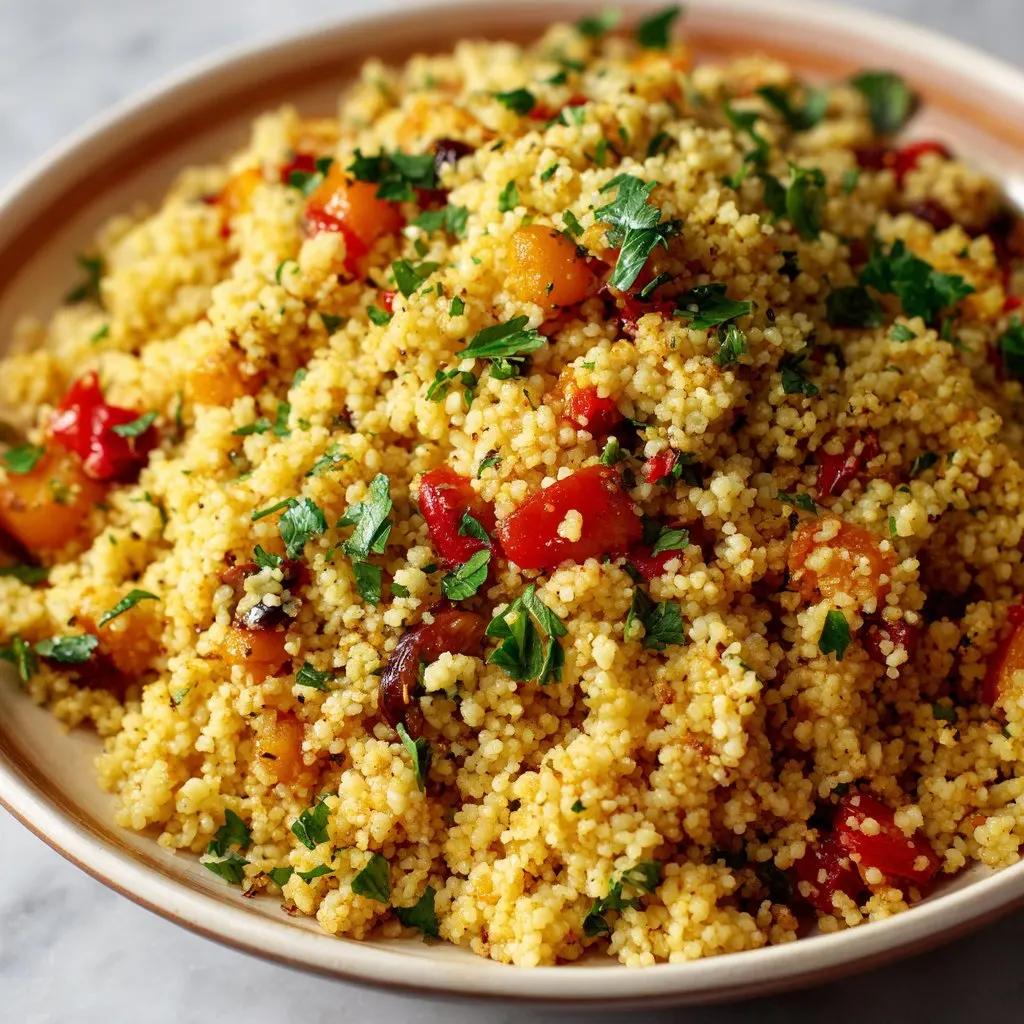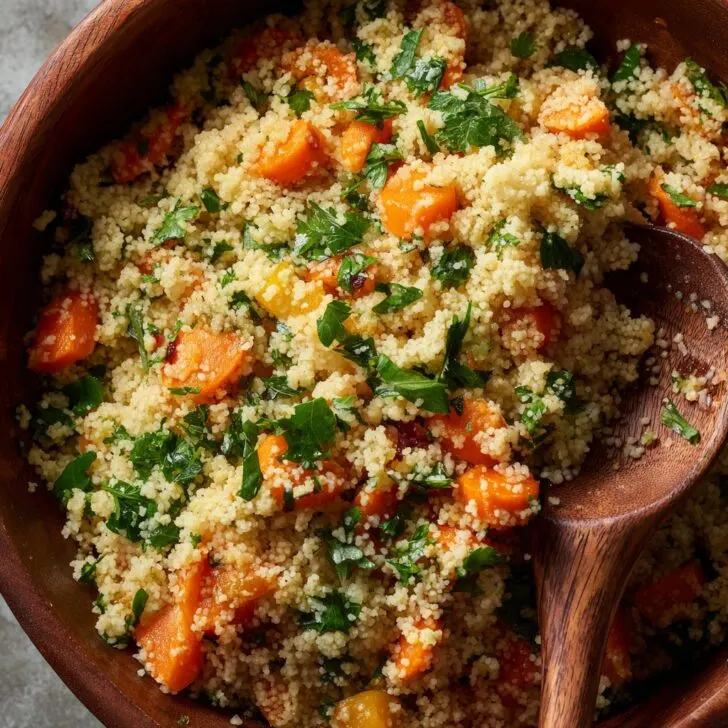So You Can't Eat Couscous? Welcome to My World
You know, I remember the first time someone told me couscous wasn’t actually a gluten-free grain—my jaw basically hit the kitchen tiles. I’d been making these, like, “healthy” salads for ages and serving them at family BBQs, blissfully unaware. My cousin (hi Jamie!) finally set me straight after a slightly awkward potluck, and since then, I’ve made it my mission to find easy, tasty couscous gluten free substitutes. Honestly, sometimes it feels like a wild goose chase through the grains aisle. But you know what? Some of these swaps have become family favorites, and I almost don’t miss the original. Almost.
Why I'm Obsessed With These Substitutes
I make these alternatives when I’ve got friends coming over who are celiac (or just avoiding gluten for fun—why not?), or when I feel like something a bit lighter. My family goes a bit bananas for the millet version (especially when I throw in too much parsley; don’t ask me why). Oh, and sometimes I just want something fast that won’t give me the bloaty feeling—quinoa’s my go-to for that. Once, I tried to trick my brother with a rice-based version... didn’t fool anyone, but he still ate three helpings. Also, I kind of love how these grains don’t stick to the pan as badly as couscous sometimes does (one less dish to scrub, right?).
What You’ll Need (But You Can Improvise)
- Quinoa (white, red, or tri-color all work—if I’m lazy, I get those pre-rinsed packs from Aldi)
- Millet (my gran swore by Bob’s Red Mill, but honestly the bulk store stuff is fine)
- Cauliflower rice (yep, just blitz a head of cauliflower; but those frozen bags are a lifesaver when I’m short on time)
- Buckwheat groats (weirdly tasty, even though the name’s misleading—no wheat here!)
- Olive oil or a knob of butter (sometimes I cheat and use margarine if that’s all I’ve got)
- Salt, pepper, and whatever herbs you fancy (parsley, mint, dill... or just whatever’s trying to escape from the back of the fridge)
- Optional extras: toasted pine nuts, lemon zest, dried fruit, feta—honestly, go wild
Let’s Get Cooking (No Need to Overthink It)
- Prep Your Substitute. For quinoa and millet: rinse 1 cup under cold water (grit is not your friend). Cauliflower: just chop and blitz in a food processor till it looks like crumbs. Buckwheat: same rinse, same fuss.
- Cook It Up. In a saucepan, add your grain with double the amount of water and a pinch of salt. Bring to a boil, then cover and simmer (about 12-15 mins for quinoa, 18-ish for millet, 10 for buckwheat). Cauliflower rice? Just sauté in a skillet with oil for 5 mins—no water needed.
- Fluff and Dress. When it’s done, take off the lid and let it steam for a bit. Fluff with a fork. This is where I usually sneak a taste (OK, maybe two tastes). Splash in some olive oil, toss in chopped herbs, and season to taste.
- Extras. If you want to go crazy, add nuts, fruit, lemon, a sprinkle of cheese, or just whatever’s lurking in your pantry. Don’t stress if it looks a bit strange at first—once you toss everything together, it sort of comes together nicely.
Stuff I Wish I'd Known The First Time
- Quinoa sometimes tastes a bit ‘grassy’ if you skip the rinse. Actually, I find it works better if you soak it for 5 mins first, but who’s got time?
- Millet gets weirdly mushy if you stir it too much. Just let it sit; trust me.
- Cauliflower rice cooks super fast—watch it or you’ll end up with a sad, soggy pile.
Things I’ve Tried (Some Worked, Some... Not So Much)
- Rice: Works OK, but it’s not the same texture. My husband called it “fake couscous” (cheers for the support)
- Sorghum: Surprisingly good, just takes ages to cook. I’d only do this if you have a lazy afternoon.
- Chopped broccoli: Look, I tried. It tasted healthy, but my kids staged a revolt. Maybe yours are braver.
What If You Don’t Have the Fancy Gear?
Honestly, if you don’t have a food processor for cauliflower, just grate it by hand. It takes a bit longer and you’ll get cauliflower bits everywhere (I once found some in my sock hours later), but it gets the job done. And for cooking grains, any old saucepan with a lid will do. If you’re really desperate, I’ve used my rice cooker and it works fine (actually, sometimes better).

How To Store (If It Even Lasts!)
Leftovers go in an airtight box in the fridge, probably good for 3 days. Though honestly, in my house, it never lasts more than a day! Reheat gently in the microwave or just eat it cold—sometimes I think it tastes better the next day, but I might just be weird like that.
How I Like To Serve These Couscous Swaps
Personally, I pile the quinoa version into a big bowl with roasted veggies and a dollop of Greek yogurt—makes an ace lunch. My family? They like it alongside grilled chicken and a mountain of mint salad. And one time at a picnic, my friend spread it on toast with smashed avocado... which sounds odd, but actually, it's not half bad.
Lessons Learned (a.k.a. My Pro Tips)
- I once tried rushing the simmering stage and regretted it because my millet turned into wallpaper paste. Take your time, let it fluff.
- Don’t go too heavy on the olive oil. One time I got carried away and it basically turned into a slip n’ slide.
- Actually, it works better if you let the grains cool for 5 minutes before stirring in herbs—that way, they stay bright and fresh.
FAQ (Because People Actually Ask Me These!)
- Can I use polenta instead of couscous?
- You could, but it’s not really the same deal. It’s a bit mushier and yellow, so if you’re after that fluffy texture, I’d stick to quinoa or millet.
- Does buckwheat really taste like wheat?
- Nope. Not even a little. It’s actually a bit nutty—some folks love it, some not so much. I’m in the ‘love it’ camp, but I get why it’s not for everyone.
- What’s the quickest swap?
- Cauliflower rice, hands down. Especially if you grab a frozen bag. You’re done in 5 minutes—just don’t wander off to check your phone or you might burn it (ask me how I know).
- Where can I get these grains?
- Most groceries have them, but I sometimes order Bob’s Red Mill online (especially for millet or buckwheat) or check out Thrive Market for bulk deals. And if you want more recipes, Minimalist Baker has some great ideas, too.
And before I forget, if you ever come up with a wackier substitute, let me know. I’m always happy to be the guinea pig, unless it involves celery (long story, don’t ask).
Ingredients
- 1 cup quinoa, rinsed
- 2 cups water or vegetable broth
- 1 tablespoon olive oil
- ½ teaspoon salt
- 1 cup cauliflower rice (optional for blend)
- ¼ cup chopped fresh parsley
- ¼ cup diced red bell pepper
- 1 tablespoon lemon juice
Instructions
-
1In a medium saucepan, combine quinoa and water or vegetable broth. Bring to a boil over medium-high heat.
-
2Reduce heat to low, cover, and simmer for 12-15 minutes until the quinoa is tender and liquid is absorbed.
-
3While the quinoa cooks, heat olive oil in a skillet over medium heat. Add cauliflower rice (if using) and sauté for 3-4 minutes until just tender.
-
4Fluff the cooked quinoa with a fork and transfer to a large bowl. Stir in sautéed cauliflower rice, salt, parsley, red bell pepper, and lemon juice.
-
5Mix well and serve warm or at room temperature as a gluten-free couscous substitute.
Approximate Information for One Serving
Nutrition Disclaimers
Number of total servings shown is approximate. Actual number of servings will depend on your preferred portion sizes.
Nutritional values shown are general guidelines and reflect information for 1 serving using the ingredients listed, not including any optional ingredients. Actual macros may vary slightly depending on specific brands and types of ingredients used.
To determine the weight of one serving, prepare the recipe as instructed. Weigh the finished recipe, then divide the weight of the finished recipe (not including the weight of the container the food is in) by the desired number of servings. Result will be the weight of one serving.
Did you make this recipe?
Please consider Pinning it!!


